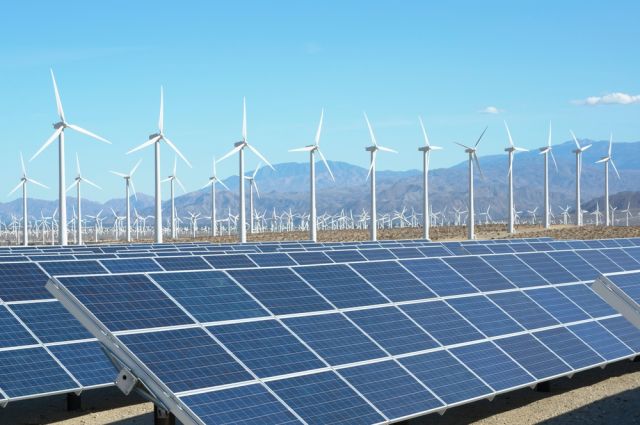
The decarbonization trajectory predicts that nearly 90% of electricity will be sourced from non-fossil sources by 2050, DNV said. (Source: Shutterstock)
A surge in renewable energy sources and global electricity demand will push the global grid infrastructure to double by 2050, according to Oslo-based DNV.
By mid-century, 70% of the world’s electricity will come from solar and wind, requiring market and regulatory adjustments to support flexibility-enhancing technologies, DNV said Jun. 19 in a press release.
Importantly, electricity will constitute 37% of global final energy use by 2050, up compared to 20% in 2023. The decarbonization trajectory predicts that nearly 90% of electricity will be sourced from non-fossil sources by 2050, DNV said.
AI, which is already being used across the power value chain, could accelerate the transition toward decarbonized electrification, DNV said.
“Deep digitalization, including the application of AI, is crucial for managing the increased complexity of a renewable-dominated power system,” DNV President and CEO Remi Eriksen said in the release.
The rise in global electricity demand by 2050 will happen as the world’s reliance on fossil fuels falls. The pathway to a decarbonized energy system will require “significant grid expansion, solutions for grid congestion, and new business models to accommodate rising electricity demand and generation from wind and solar,” DNV said.
DNV also said expansion of the grid will be affordable due to “growing efficiencies in grid technology and the increased electricity load.” DNV said global grid charges passed to consumers will remain stable or decline over the long-term.
However, a key bottleneck in the energy transition is the expansion of the electrical grid, DNV said.
“There will be no transition without transmission,” DNV Energy Systems CEO Ditlev Engel said in the release. “The new energy system will require data-driven solutions and policies that address all interconnections, from permitting to the integration of AI and cyber-resilience.”
Recommended Reading
Comments
Add new comment
This conversation is moderated according to Hart Energy community rules. Please read the rules before joining the discussion. If you’re experiencing any technical problems, please contact our customer care team.
